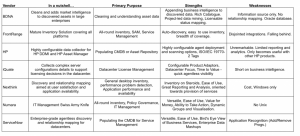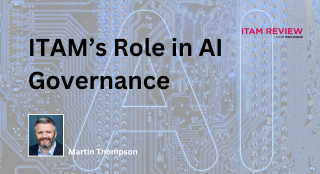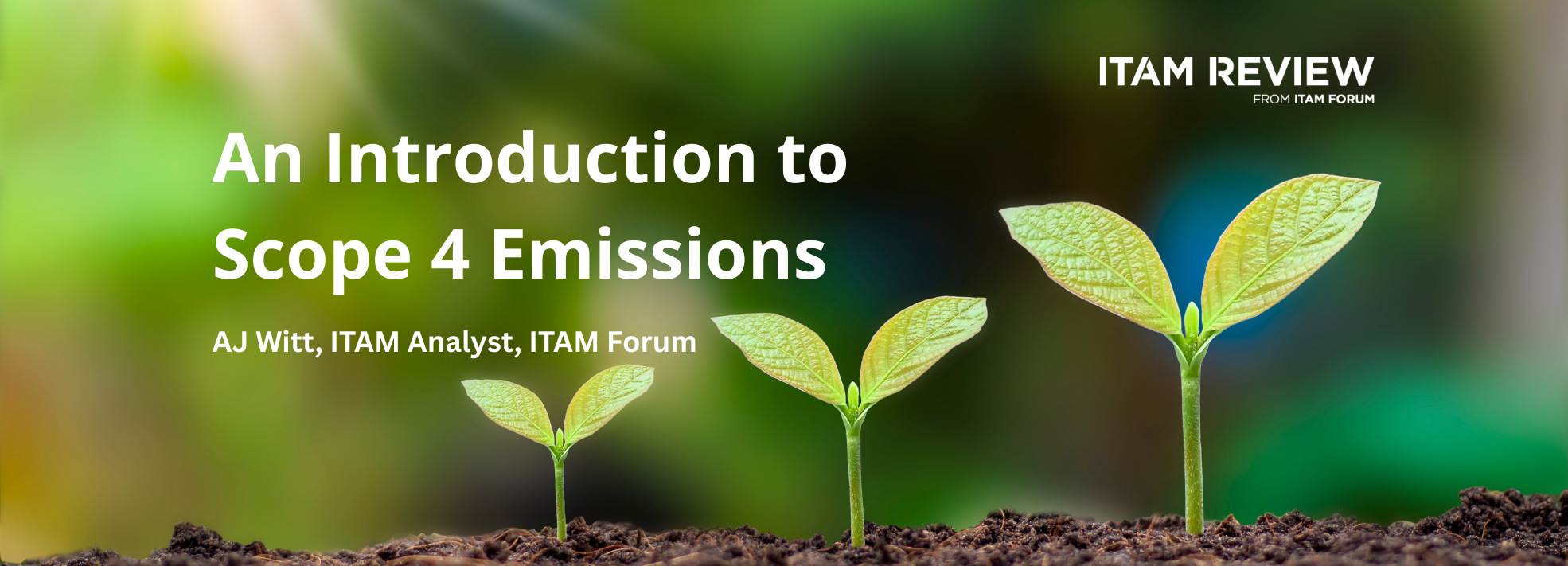Best practice
Inventory and Discovery Tool Selection Criteria
 The recent Inventory and Discovery Tools Group Test featured an independent review of BDNA, FrontRange Solutions, HP, iQuate, NEXThink, Numara Software and ServiceNow.
The recent Inventory and Discovery Tools Group Test featured an independent review of BDNA, FrontRange Solutions, HP, iQuate, NEXThink, Numara Software and ServiceNow.
The assessment criteria are listed below. You might find these useful, as a starting point, when developing your own assessment criteria. If you need clarification on any of the points below or if I have missed anything that you think should be included – please give me a shout or leave a comment below.
Hardware
- 1 What operating systems can your software audit? E.g. XP
- 2 What platforms can your software audit? E.g. phones, Servers, desktops
- 3 Brief Description of Infrastructure / Methodology (e.g. Agent / Agentless, SaaS, Client / Server, Web Based, Admin Console?)
- 4 If your software involves the installation of a central server – please provide a brief overview of any prerequisites for that server.
- 5 Database repository used
- 6 If your software audits more than one operating system – please describe any significant differences between information collected. E.g. If the agent on windows collects different information to the agent used on a MAC.
- 7 High level overview of hardware configuration details provided
- 8 How are assets uniquely identfied and classified?
- 9 What information is collected regarding power consumption or power ratings?
- 10 How is the physical location of assets managed?
- 11 How is the status of assets managed? (e.g. Archived, live, test, production etc)
- 12 What other networked devices are identfied above and beyond traditional desktops and servers e.g. Printers, IP Phones etc
- 13 What network setting or configuration details are collected?
- 14 What attached peripherals are identified? E.g. Local Printer, USB Storage Device etc
- 15 What details are collected regarding local services or processes running?
- 16 What detail is collected regarding hardware vendor data (e.g. Warranty, serial number, support codes etc)
- 17 Are users (whose machines are being audited) able to interact, interupt or otherwise correspond with the audit process e.g. cancel the audit, fill in a form etc
- 18 How are physical asset tags managed?
Architecture
- 19 Describe the method used to interact with devices. What sources are used to build an inventory of an asset e.g. WMI? SMTP? Add / Remove Programs, Sniff, Ping etc)
- 20 Technology used to collect data (agent, agentless, zero footprint)
- 21 Technology used to aggregate data (collection servers, internet, P2P, central server)
- 22 How are new, moved or rogue devices managed?
- 23 How does the agent communicate? What is the agent footprint? Secure / Encryted communication?
- 24 How is the agent updated? (Auto-update, reinstall?)
- 25 How does the agent communicate? What methodology is used? E.g. Regular broadcast? Scheduled audit?
- 26 What happens when a device does not respond or missed an audit?
- 27 What options does the client have for integration e.g. Active Directory, Service Desk, License Management etc
- 28 What features support the scalability of your product to hundreds of thousands of devices (if appropriate)
Software
- 29 What details are collected regarding software?
- 30 Is Software Usage Monitoring Provided? (active or passive)
- 31 What details are collected regarding hardware configuration that might be useful to installed software (e.g. CPU, Cores, Options enabled)
- 32 How does your software track Virtual applications, Virtual Machines, Partitions (software therein, hardware profile, relationship with physical device)
- 33 What features aid the recognition and prioritization of software?
Data and Reporting
- 34 How are audits scheduled? How live is the data? E.g. Instant notification of change or upon next audit?
- 35 Does your software track users as well as devices? What data is collected?
- 36 What features are included to prevent duplicates and ensure accuracy of data (e.g. Will moved, rebuilt or systems that sit in storage for six months be recognized as duplicates?)
- 37 What features are included to search or filter assets based on criteria or credentials?
- 38 What features are included to search or filter file types?
- 39 Does your software provide detail regarding asset relationships? (e.g. Mapping between devices, users, Apps, Networks, Services, Dependencies)
- 40 What Non-networked information can be stored? (e.g. Purchase date, PO number, Warranty, Org. Unit etc.)
- 41 How do clients gain access to their raw inventory data? (e.g. Schema? API? Csv/xml? Plugins, web services?)
- 42 How do clients report on, share and collaborate on their inventory data?
- 43 What features are included to assist with tagging, grouping, sorting or otherwise organizing assets by their characteristics?
- 44 What alerts are provided?
- 45 What trend analysis is provided?
- 46 What features are included to help clients review the history or audit trail of an asset?
- 47 What features are included to assist clients with migration or upgrade projects?
- 48 What features are included to assist clients identifying and acting on exceptions? E.g. deviance from standard build, unauthorized changes, changes since last date etc.
View the Inventory and Discovery Tools Group Test.
Can’t find what you’re looking for?
More from ITAM News & Analysis
-
Broadcom vs Siemens AG - A Brewing Storm
The ongoing legal battle between VMware (under Broadcom ownership) and Siemens is yet another example of why ITAM goes far beyond license compliance and SAM. What might, at first glance, appear to be a licensing dispute, ... -
Shifting Left Together: Embedding ITAM into FinOps Culture
During one of the keynotes at the FinOps X conference in San Diego, JR Storment, Executive Director of the FinOps Foundation, interviewed a senior executive from Salesforce. They discussed the idea of combining the roles of ... -
Addressing the SaaS Data Gap in FinOps FOCUS 2.1
I recently reported on the FinOps Foundation’s inclusion of SaaS and Datacenter in its expanded Cloud+ scope. At that time, I highlighted concerns about getting the myriad SaaS companies to supply FOCUS-compliant billing data. A couple ...
Podcast
No time to read? Want to stay up to date on the move? Subscribe to the ITAM Review podcast.
ITAM training
On-demand and live training for ITAM, SAM and Software Licensing professionals.
Similar Posts
-
The M&S Cyberattack: How IT Asset Management Can Make or Break Your Recovery
Marks & Spencer (M&S), the iconic UK retailer, recently became the latest high-profile victim of a devastating cyberattack. Fellow retailers The Co-Op and Harrods were also attacked. Recent reports suggest the rapid action at the Co-Op ... -
AI in ITAM: Insightful Signals from the Front Line
During our Wisdom Unplugged USA event in New York in March 2025, we engaged ITAM professionals with three targeted polling questions to uncover their current thinking on Artificial Intelligence—what concerns them, where they see opportunity, and ... -
How ISO/IEC 19770-1 Can Help Meet FFIEC Requirements
In the world of ITAM, the regulatory spotlight continues to intensify, especially for financial institutions facing increasing scrutiny from regulatory bodies due to the growing importance of IT in operational resilience, service delivery, and risk management. ... -
An Introduction to Scope 4 Emissions
Executive Summary For ITAM teams, sustainability is a core responsibility and opportunity. Managing hardware, software, and cloud resources now comes with the ability to track, reduce, and report carbon emissions. Understanding emission scopes—from direct operational emissions ...




